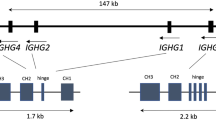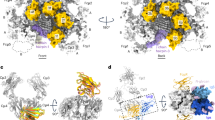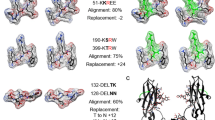Abstract
ENZYME digestion of immunoglobulins with papain, first described by Porter1, has proved to be a useful technique for obtaining biologically active fragments of the parent molecules. The fragments are readily separated into the antigen combining Fab fragments and the Fc fragment which, though devoid of antigen-combining activity, retains other biological properties shared by most γG antibody molecules2. After prolonged digestion of normal human gamma globulin with papain, there is progressive degradation of the Fc fragment. There remains, however, a rapidly migrating resistant segment of the Fc fragment known as the F′c fragment (F′c) (ref. 3). Despite the fact that tryptic peptide maps of F′c derived from pooled gamma globulin display the characteristic Gm “a” and “non-a” peptides4, this genetic factor cannot be demonstrated by serological methods capable of detecting Gm a activity in the Fc fragment. Apparently insufficient conformation is retained by the F′c fragment for expression of this allotypic activity, even though the primary molecular basis for it persists. Although none of the biological properties of the Fc fragment have been recovered in the F′c fragment4, it seems possible that the F′c region contributes to some other biological properties of antibodies such as complement complexing, binding to skin, and placental permeability. Consequently, further characterization of this fragment may yield information relating chemical structure to biological function.
This is a preview of subscription content, access via your institution
Access options
Subscribe to this journal
Receive 51 print issues and online access
$199.00 per year
only $3.90 per issue
Buy this article
- Purchase on Springer Link
- Instant access to full article PDF
Prices may be subject to local taxes which are calculated during checkout
Similar content being viewed by others
References
Porter, R. R., Biochem. J., 73, 119 (1959).
Cohen, S., and Milstein, C., Adv. in Immunol., 7 (Academic Press, 1967).
Poulik, M. D., Nature, 210, 133 (1966).
Irimajiri, S., Franklin, E. C., and Frangione, B., Immunochemistry, 5, 383 (1968).
Woods, K. R., and Wang, K. T., Biochim. Biophys. Acta, 133, 369 (1967).
Gross, E., Methods in Enzymology (edit. by Hirs, C. H. W.), 11, 238 (Academic Press, 1967).
Spackman, D. H., Stein, W. H., and Moore, S., Anal. Chem., 30, 1190 (1958).
Press, E. M., Givol, D., Piggot, P. J., Porter, R. R., and Wilkinson, J. M., Proc. Roy. Soc., B, 166, 150 (1966–67).
Hill, R. L., Delaney, R., Fellows, R. E., and Lebovitz, H. E., Proc. US Nat. Acad. Sci., 56, 1762 (1966).
Turner, M. W., and Bennich, H., Biochem. J., 107, 171 (1968).
Author information
Authors and Affiliations
Rights and permissions
About this article
Cite this article
IRIMAJIRI, S., FRANKLIN, E. & WOODS, K. C-Terminal Sequence of the F′c Fragment of Human Gamma G Globulin. Nature 220, 612–614 (1968). https://doi.org/10.1038/220612a0
Received:
Issue Date:
DOI: https://doi.org/10.1038/220612a0
This article is cited by
Comments
By submitting a comment you agree to abide by our Terms and Community Guidelines. If you find something abusive or that does not comply with our terms or guidelines please flag it as inappropriate.



